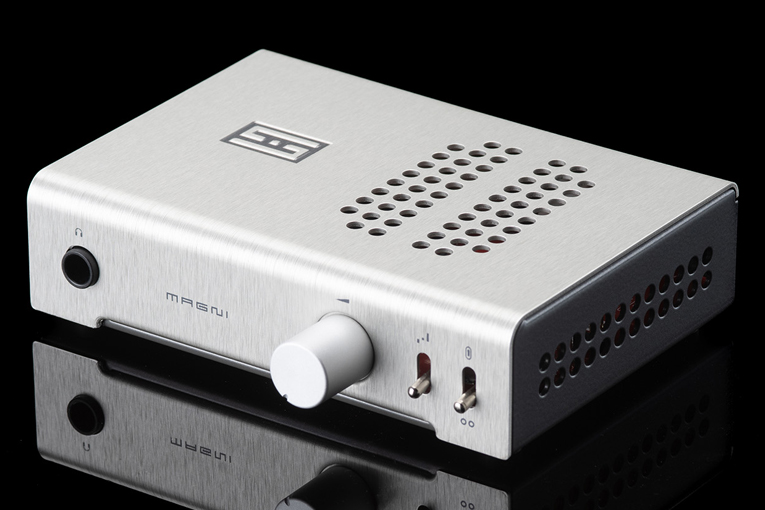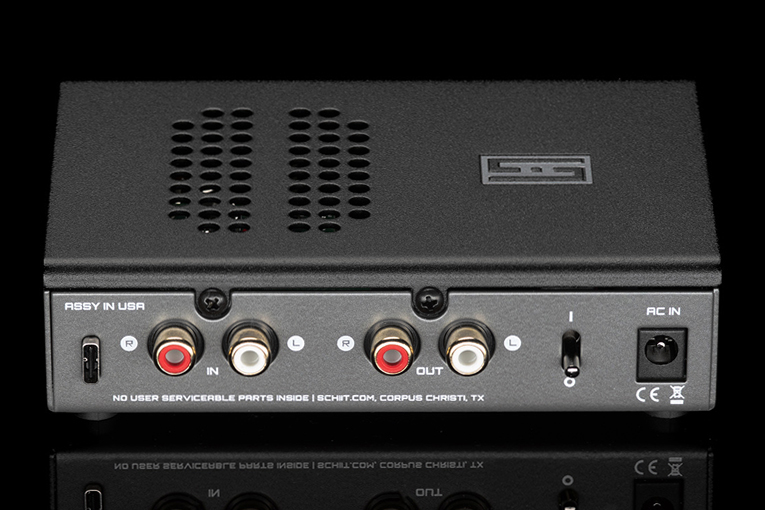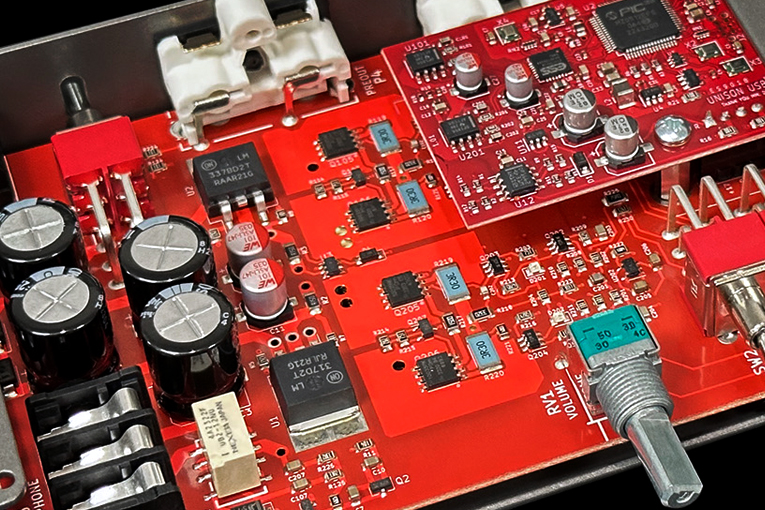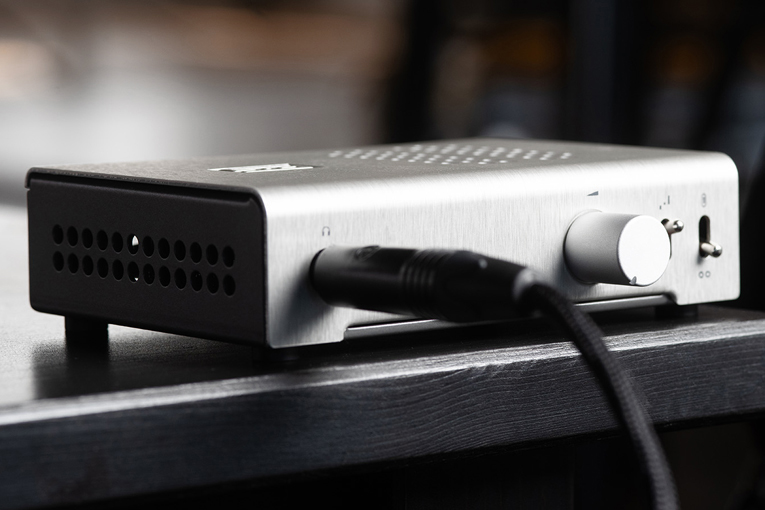Sound: 









Value: 









(Read about our ratings)
 The hunt continues for some great, affordable headphone amps. A few weeks ago I checked out the Aiyima T8, a “no name” Amazon special, and I found it to be surprisingly decent for $120 (all prices USD). This week we go up in price slightly, to the Schiit Audio Magni. Base price is the same as the T8, but if you include a built-in USB DAC, the price goes up to $189. Those prices are for the black finish—add $10 for the brushed-aluminum silver version.
The hunt continues for some great, affordable headphone amps. A few weeks ago I checked out the Aiyima T8, a “no name” Amazon special, and I found it to be surprisingly decent for $120 (all prices USD). This week we go up in price slightly, to the Schiit Audio Magni. Base price is the same as the T8, but if you include a built-in USB DAC, the price goes up to $189. Those prices are for the black finish—add $10 for the brushed-aluminum silver version.
Schiit has made quite a name for itself in the last few years, offering affordable audiophile products that are the opposite of its cheeky name. Most of its offerings are less than $1000. A few years ago, Brent Butterworth reviewed a predecessor to the Magni, the Magnius, and he really liked it.

Power-wise, Schiit claims 3Wpc into 16 ohms and 220mWpc into 600 ohms, which should be plenty for the vast majority of headphones out there, especially those you’d consider connecting to a sub-$200 amp. The optional Unison DAC board includes an ESS 9018 chip. So, on paper at least, it seems to have the makings of a great product for the price.
Use
The Magni is quite small, roughly half the size of a paperback book. On the back there are a USB-C input, and analog RCA inputs and outputs. I love seeing USB-C on a product like this. One less USB-A cable I need to keep around. On the front is the 1/4″ headphone output, the volume knob, and two switches with icons that, while confusing at first glance, are quite logical. The left switch is the variable gain for the output: +15dB, 0dB, and -10dB. The right switch is the toggle between the USB-C input (a vertical oval) and the analog input (two circles).

The only complaint I have with the design—and it’s a minor one—is that the power switch is on the back. Personally, I would have swapped the power and the gain controls, since you’ll use the former all the time and the latter only when switching headphones. Again, it’s not a big deal, and it’s easy enough to distinguish the power switch on the back from the inputs. When you turn it on, a tube-like glow from orange LEDs lights up the innards, which are visible through a grill on the top. A nice touch, that.
Sound
To keep things consistent, I used the same headphones I used testing the T8: Audeze LCD-3s, HiFiMan Sundaras, and Meze Audio Rai Pentas. The LCD-3 headphones are an older model, but great for tests like this. Brent reviewed the closed-back Sundara headphones. I listened through the open-back version—my review should go live in two weeks.
The Magni easily powered the LCD-3s. With “Both Hands” (Living in Clip, 16-bit/44.1kHz FLAC, Righteous Babe Records / Qobuz), Ani DiFranco’s staccato guitar and vocals had immediate attack. Turning it up to greater-than-normal listening volumes, I found little change to the quality of the audio and no audible distortion, just far greater intensity. Switching to something a little (OK, a lot) heavier, I put on “Dead Man Walking,” a driving drum-and-bass track off David Bowie’s Earthling (16/44.1 FLAC, Parlophone UK / Qobuz). Even at high volumes, the Magni let the LCD-3s keep their composure, and the bass remained strong. At arguably unsafe volumes, I heard a bit of distortion, but if you’re at that level, you’re doing unkind things to your hearing.

The Magni gave the Sundaras enough power to retain their lovely wide-open sound, even at high volumes. Leaning into this open sound, I put on the third movement, Allegro, of “Autumn” from The Four Seasons by Antonio Vivaldi, performed by violinist Gidon Kremer and the London Symphony Orchestra conducted by Claudio Abbado (24/96 FLAC, Deutsche Grammophon / Qobuz). Each instrument had its own place in the soundstage, retaining its individual timbre and placement. I was able to turn the knob all the way up with the Sundaras, and at that level there was a little harshness, but not much.
Comparison
Logically, I compared the Magni to the T8 I reviewed earlier this month. As I mentioned above, the base prices are similar, though when similarly configured, the Magni is $70 more. Certainly not nothing, but reasonably close. Switching to the Rai Pentas, I noticed a lack of hiss with the Magni. Though subtle, there’s a bit of background noise with the T8 that you can really only hear during silent moments or between tracks. It’s there, though. The Magni has no such issue. Using the same Vivaldi track, I didn’t hear much difference. It was easier to get a bit louder with the Magni, but these two DACs use the same ESS chip, so with easier-to-drive headphones they should sound fairly similar. It revealed that the T8 is a great deal, but between the two I’d pick the Magni for sure.

Next, I compared the Magni to iFi Audio’s Hip-dac 2. When new, this was the same price as the Magni. It’s smaller and more portable, with a built-in battery. Despite that slightly different purpose, it’s a great amp and one I use all the time. Switching back to the LCD-3s, I found that the Hip-dac 2 powered them well with “Thunderstruck” from AC/DC’s The Razors Edge (24/96 FLAC, Columbia Records / Qobuz). With the volume control all the way up, I got a level that was a bit above what I’d call “rockin’ out” and slightly below “I’m 45. I should turn this down.” The Magni, on the other hand, was able to push the LCD-3s even more. Slade’s drums had a more immediate punch, everything felt more controlled, and I could get a similar volume to the Hip-dac’s maximum at roughly 60 percent of the Magni’s volume range (with the gain setting at +15). All the way up on the Magni was too loud to listen. Which is to say, the Hip-dac is great, but without the limitations of being portable, the Magni easily outpowers it.
Conclusion
I really liked the Magni. It’s small but sounds big. It’s inexpensive but performs expensively. It’s unobtrusive and, quite simply, does what it claims. I got great sound from it no matter what headphones I used. Is it possible you’ll need more power? I suppose, but headphones that would require more power than the Magni can provide are pretty rare. If you want more volume, I’d be worried about your ear health. If you don’t need something portable, or something with extreme amounts of power, start here.
. . . Geoffrey Morrison
Associated Equipment
- PC: iBuyPower Windows 10.
- Amplifiers: Aitima T8, iFi Audio Hip-dac2.
- Headphones: Audeze LCD-3, HiFiMan Sundara.
- Earphones: Meze Audio Rai Penta.
Schiit Audio Magni Headphone Amplifier–DAC
Price: $189 in black ($10 more for silver).
Warranty: Two years, parts and labor.
Schiit Audio
24900 Anza Drive, Unit A
Valencia, CA 91355
Phone: (323) 230-0079
Website: www.schiit.com




